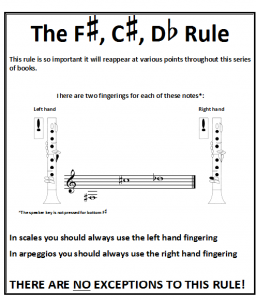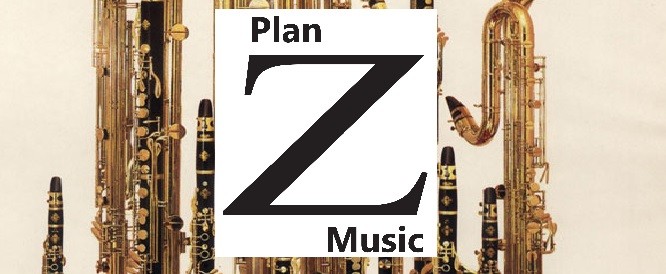The choice of left and right alternative fingerings often presents a dilemma for clarinet students. Many teachers are seemingly sweetly reasonable about the matter: “You could do it this way, or you could do it that way. Do whichever you prefer,” they say. This generally results in the student dithering between the two options and becoming increasingly confused. All three volumes of Learn Your Scales and Arpeggios for Clarinet set out clear rules to avoid inconsistencies.
I shall start with bottom F/2nd register C. The use of the right hand fingering for these notes, wherever possible, is normal practice among the great majority of clarinet players. I regard it as the orthodox choice since it stems from the Albert system clarinet which preceded the Boehm system and only has a RHC and a LHB (most German players use instruments based on this system to this day). The right hand choice for C means that B, in C major, G major etc., is played with the left hand whilst the right hand remains on the C key. It is not strictly necessary to hold down the C when playing B, but it is good practice in these scales as it avoids cross-fingering when transferring between B and C.
Small children, starting the clarinet at an early age, often have difficulty reaching RHC and, particularly, LHB, so their teachers introduce the alternatives: RHB and LHC. Some junior school teachers encounter this problem so frequently that they introduce these fingerings routinely, without checking to see if the orthodox fingerings can be made to work. I have inherited many such back-to-front players from junior school teachers, usually at a point when they are too far down the line to switch them around. I have had quite a few go on to reach a good level, including Grade 8 and County Youth Orchestra, but their playing is always a bit laboured. The Mozart Concerto, in particular, suffers, with awkward left/right coordination. Any player aiming for a career in music would be well advised to make the switch. I have already written about my misgivings regarding junior school tuition: this is one of the reasons why.
For scales with C#, my choices are a little more controversial. Many players in the profession use LHB followed by RHC# in the scales of D major, B minor, A major and F# harmonic minor: in other words, when C# is followed by D§. They then need to change to RHB and LHC# when D# comes in to the scale. This seems to me to be rather illogical and is certainly likely to lead to confusion in students who have got used to pressing RHC at the same time as LHB and are likely to tend to forget to switch when learning E major. Crossing the break to RHB followed by LHC# in sharp scales is referred to in my books as the Sharp Break Fingering Pattern; it gives rise to the F#/C#/Db Rule which appears repeatedly throughout Books 2 and 3. This rule states that bottom F#, second register C# and Db should always be played with the left hand in scales and with the right hand in arpeggios.
 There are several reasons to back up imposing this rule:
There are several reasons to back up imposing this rule:
• It means that, in anticipation of crossing the break in both scales and arpeggios, the player can reach for a right hand fifth finger key while the left hand is busy dealing with throat notes (A or A#, for example).
• It ensures consistency throughout the major and minor scales and arpeggios.
• This is the most efficient fingering choice mechanically. Players are invited try the following exercises using both C# options:
This scale exercise is cumbersome when played with the right hand fingering because the fourth and fifth fingers are conjoined within the hand. Most players can execute this much more rapidly with the left hand fingering.
This arpeggio exercise is more efficient played with the right hand fingering because the fourth and fifth fingers are predisposed to move together. When the left hand fingering is used problems arise with the coordination of R4 and L5 and an unwanted note tends to creep in at high speed.
For the same reason, the student is advised to cross the break to a right hand fingering in arpeggios wherever possible in order to keep the following finger movement in one hand.


